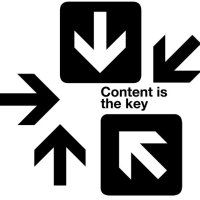Successful blogs take time and effort. They also need a strategic focus in order to understand what they are to achieve. By following the following five general considerations on blog strategy, readers will find sites more appealing, and the content will have a much better flow and direction.
Clearly design to the topic, audience and value proposition
When developing both the design and content of a blog, ensure that it is clear what the topic of the blog is, who the intended audience is, and why this blog is unique among those in that field of discussion. By keeping these three elements clearly stated, they ensure that visitors understand exactly why they are on site. It also ensures the blog has a focus and direction for all developed content, and that this is in harmony with the blog design.
Be clear over the details
These are the small things, but the types of technical irritations that can damage credibility or turn people off of the site. Simple things such as the way the front page promotes blog excerpts – if this isn’t intuitive and seamless, users might give up and leave. Internal search on the site is key if users are expected to explore previous content. Blogs are also very personal, which is how they differ from other media. By not changing the author from “Admin” to the actual name of the writer, the important warmth and personalty of the blog is diminished.
Use blog conventions to your advantage
Two things which should not be personalized are the conventions in how people subscribe to the content, and how they share it. These two features should be obvious on the blog, so users can continue to consume or actively share content. There is a question over what sharing sites should be available, and many answers to this. Certainly the key sites such as Twitter, Facebook and Google+ are important for easy sharing.
Magazine or Diary format?
Most people think of blogs to be in the diary format, however there are exceptions to this rule. If the content on the site is not generally time sensitive, it might be better to display a magazine style of design. This will help the blog stand out from others, and is particularly good at making images stand out and separating articles from one another. However, by stepping out of convention, it is important that the site design doesn’t leave visitors confused.
Image selection and placement are important considerations
There is no question over the value of images in web content to break up text, and provide useful context and visual cues to the content. In light of this, the selection and placement of these images is very important.
Images should work with the content to enforce the message of the post. Placement at the top of the content, or top right (keeping in mind the F style scanning conventions) will help the visitor understand immediately what the content is all about, then follow on from that.
There should be a general strategy behind image selection. Sometimes annotated images are great to convey a message that works with the content. Developing infographics can be a great way of getting the post to go viral, but take time to develop. Rules of thumb for general blogs is to enforce the message with an image that promotes either humor or curiosity.
These five considerations will help any blog strategically target an audience, and fuse the content with the site design. When incorporated into the operations of the blog, they will give the site focus. This is useful to both the visitor in understanding what is on offer, but also the writers in maintaining focus and direction.
No related posts.
Related posts brought to you by Yet Another Related Posts Plugin.













Leave Your Response